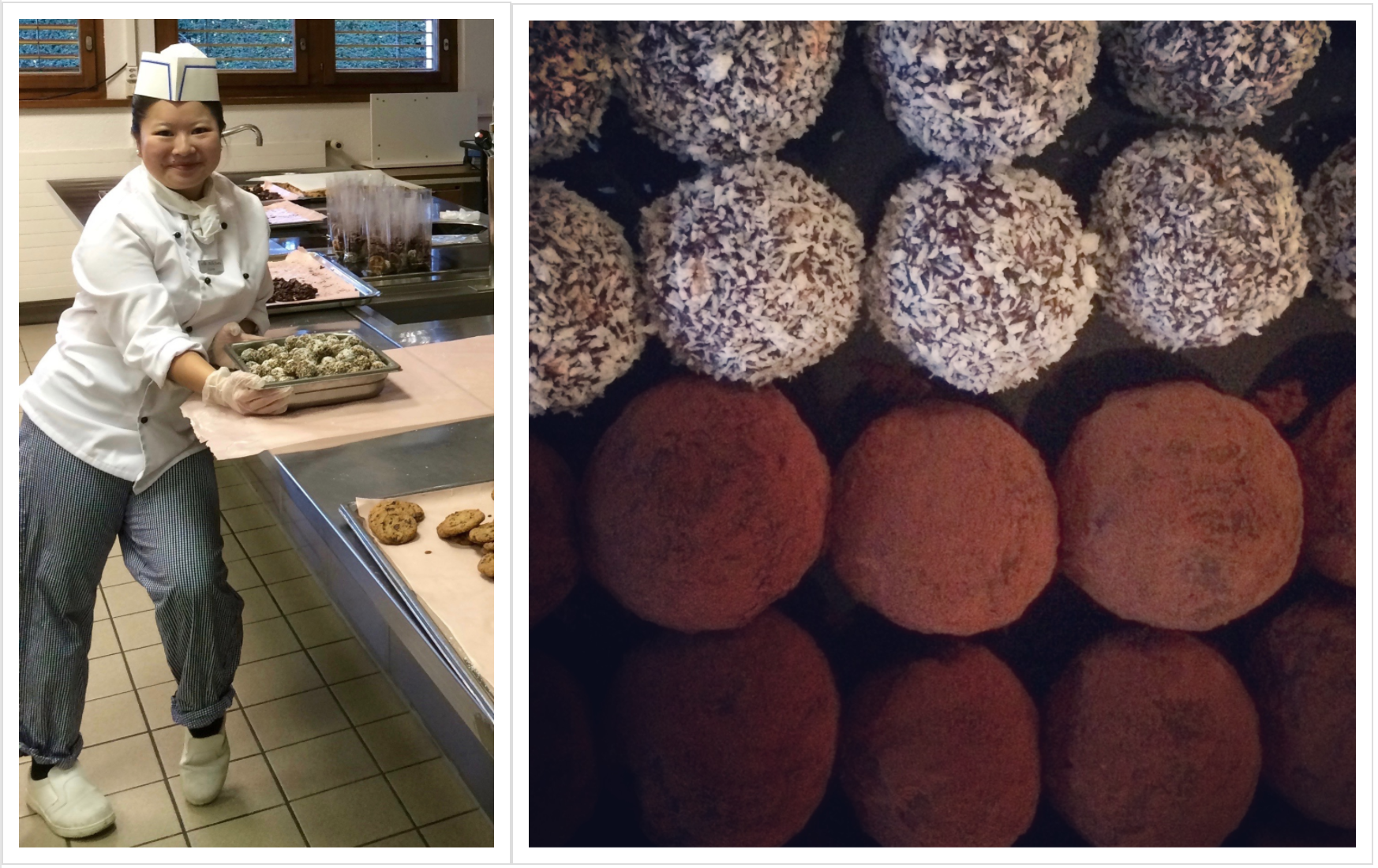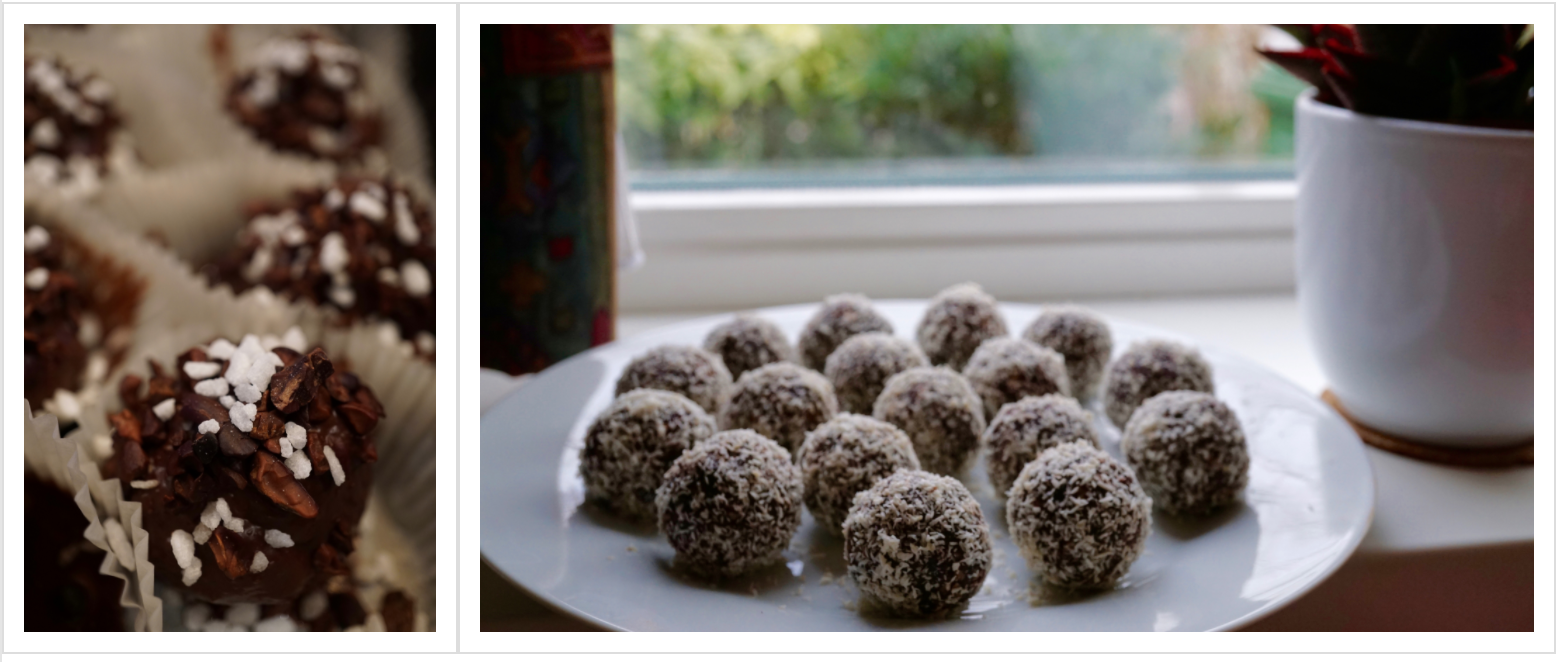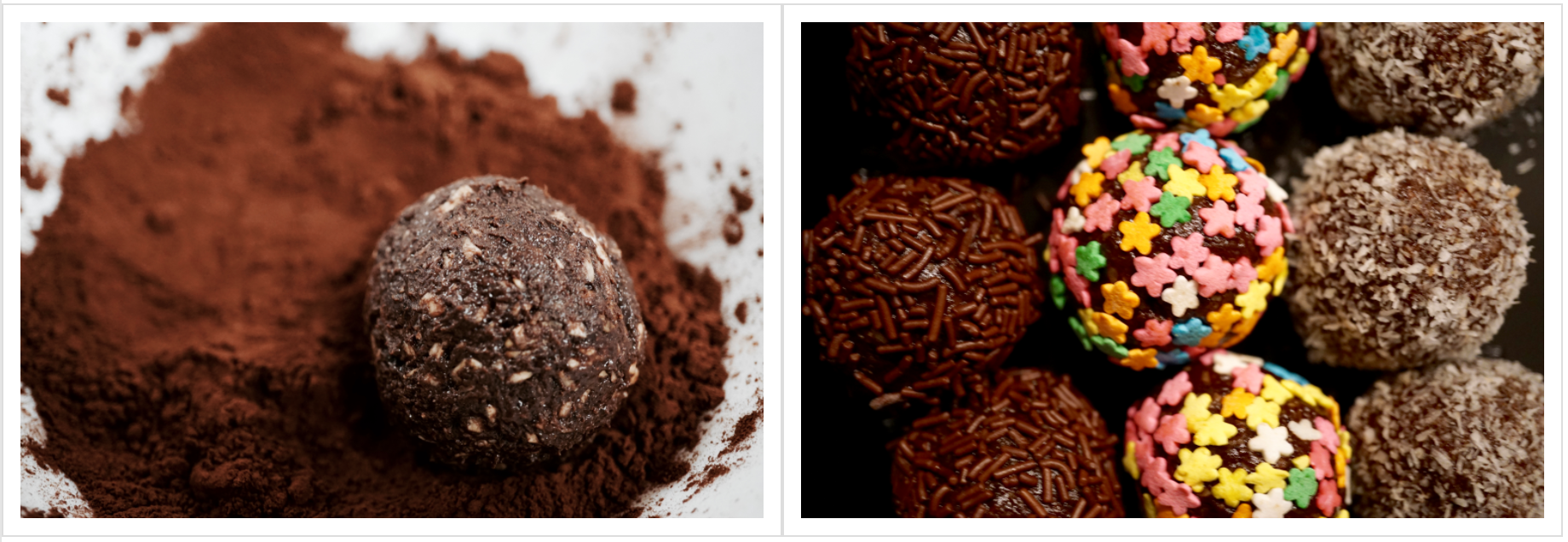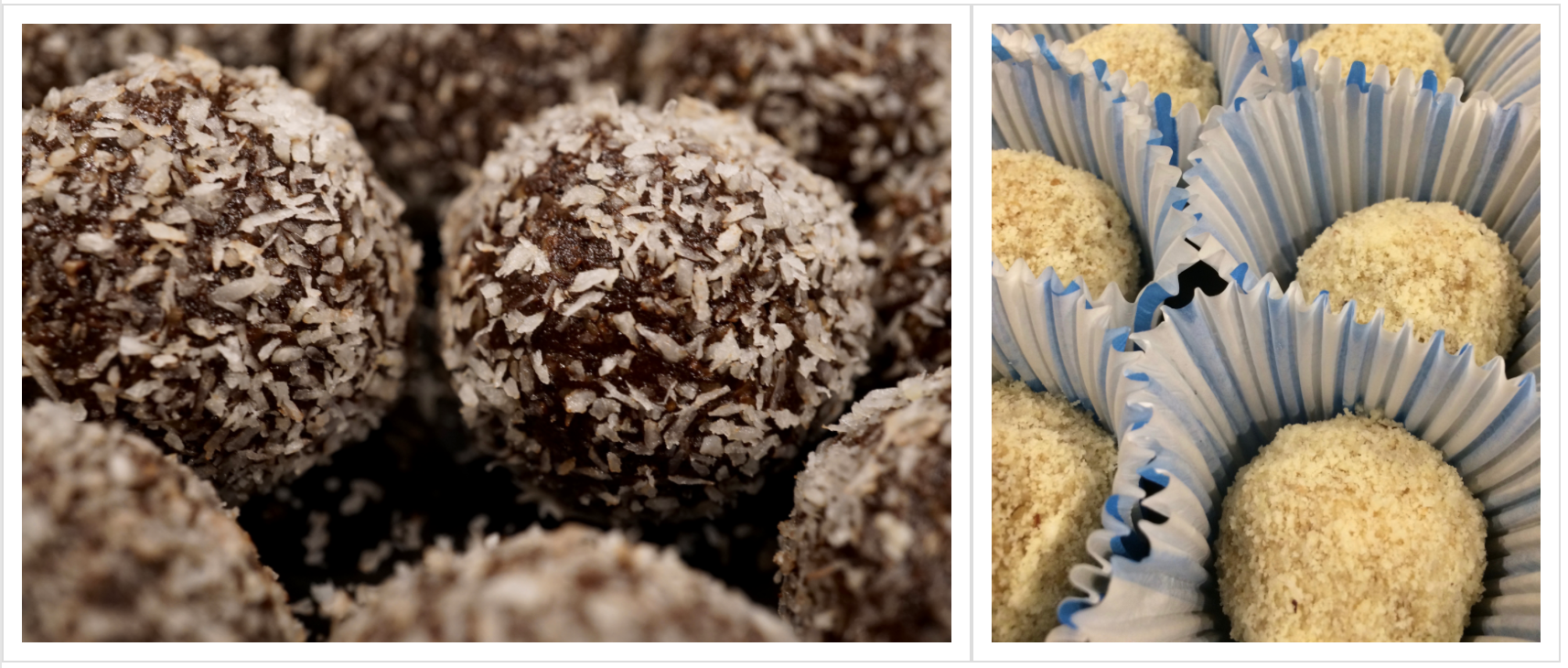Today is a very special day for Swedes or really just every chocolate loving person out there. In Sweden, they have dedicated May 11th to chocolate balls – “Chokladbollens Dag”. For one especially chocolate craving person, Alaine Handa, the search of making the best chokladbollar has almost become an obsession during the last five years. Now, she is working on a coffee table book dedicated to chokladbollar, the Swedish concept “fika” and a balanced way of living.

Today is the day of the Swedish chocolate balls “chokladbollar”, pronounced “hoclabollah”. The chocolate balls are buns made of left over cake, cocoa, butter and a few other ingredients. Alaine Handa is a chokladbollar enthusiast. In fact, she claims to be obsessed with the Swedish treat and she has spent years getting the recipe just right. Today, she is co-hosting an event at a café called Ebbas Fik in Helsingborg.
The first time the world was introduced to Swedish chocolate balls was in 1943 during World War II. A recipe was published in “Svenska Dagbladet” and the same year a similar recipe on Danish “havregrynskugler” was published in the Danish book “Ingenuity in times of crisis”. The recipes are simple, using leftovers to create chocolate balls. But as Alaine Handa was to find out, the method can be tricky.
Alaine Handa has truly lived a nomadic live. She was born in Singapore, had her childhood in Jakarta until moving back to Singapore when she was eight years old. Then she studied in California, moved to New York for seven years, back to Singapore, then graduate school in Switzerland and an internship in Belgium. And now this multinational woman has dedicated all of her passion and energy in the Swedish specialty “chokladbollar”. Seems a bit confusing? Well, it all started years ago, when Alaine Handa was just a child.
“I grew up with my aunt making these rum balls in Indonesia. She made them the Dutch way using biscuits appose to left over cake. But she used real rum. As a child that was one of my favourite treats. Then, when I lived in New York, a Swedish café called Fika opened near my apartment. I walked in and saw chokladbollar. And I thought that kind of looks like rum balls, maybe it tastes similar to it. I tried it. And loved it,” Alaine Handa explains.

Before Alaine Handa moved to New York she had studied in California. At one point the students had to choose a “general education requirement” such as literature or social science. Alaine Handa did not feel like taking Shakespeare, as she puts it, instead she chose Scandinavian Studies. Having lived a truly international live, she already had plenty of Swedish friends. Therefore, she decided to take a Swedish class every Monday to Friday before going to university. Still, this may seem odd to some. But Alaine Handa is the kind of person who decides on a project and sees it all the way through. In the same way, she years later was to do with the chokladbollar. That obsession started five years ago on a plane from Copenhagen to Singapore.
“I was on a plane, sitting next to a Swedish woman. We were prata lite svenska. I was telling her that I love chokladbollar and she told me it was super easy to make and gave me the recipe. So, this entire trip I was just going like – coffee, oats, butter, sugar, cocoa – I literally memorized it. I went home, bought the ingredients, started to make them. It was kind of try and error to get the proportions right, because all the recipes online did not come up right,” Alaine Handa explains.
Three years later, two years from today, Alaine Handa finally perfected the recipe.
“It was like an obsession basically. In Switzerland and Belgium, the weather is different than in Singapore. Singapore is very humid, so the balls tend to be more wet. And Switzerland was dry, so they were not forming properly,” Alaine Handa explains.

Now, she has gotten the chokladbollar making down to a science. It is all about measuring the ingredients just right and taking humidity and temperature into consideration. It took her three years to get the basic right. Then she started to experiment. Today, she masters about 30 different types of chokladbollar.
“I am totally obsessed with making things from scratch. I started looking into organic food and using whole foods. It tends to be really expensive, in Singapore especially. It is not budget at all.”
Luckily, Alaine Handa ensures that the perfect Danish butter or the just right French cocoa is not a necessity. If you have got the method right it should not be too difficult to make those delicious chocolate balls. But to her, the perfect chokladbollar still have not been made.
“If I had the perfect ingredients they would come from different parts of the world. I have gotten very close recently, but the ingredients were very difficult to get. I literally had French cocoa from a specialty chocolate shop in Sweden, I had organic brown sugar from this specialty health store – I can’t even remember where I found it – and of course, the best butter that was rated in the butter award, the Danish butter Lurpak. I use real vanilla bean and Italian roast coffee. And then of course local coconut shavings from Southeast Asia. They are very simple to find over there, and they are very cheap and very good,” Alaine Handa explains and continues:
“This is why I think I should never open a café, because I would be like – I need to make it the best every time! And I would… lose money.”

In the book, Alaine Handa takes a social interception on chokladbollar. She explains the book is more than recipes it is also about this concept of balanced life, that Scandinavian people seem to embrace with the concept of Danish hygge, Norwegian kos and Swedish fika – which is about taking some time out for yourself every day to relax either alone or in the company of others and have a cup of coffee and a nice treat – like chokladbollar.
“I love fika – taking a coffee break in the middle of the day or even in the evening actually. Anytime you can fika. And I love the story about chokladbollar. Almost every Swede learn to make them as a kid with their grandmother, aunt or mother, even grandfathers,” Alaine Handa states.
At the moment Alaine Handa is trying out two working titles for her book. One of them is “In search of the best chocolate balls”. And then there is the more comical title “I love Swedish chocolate balls”.
“Some of the titles for my recipes are hilarious. I have been really into fruit lately and I just perfected what I am calling monkey balls, because it is banana chocolate. Blue balls, is another one. It is blueberry stuffed chocolate balls. So, I thought I could do a funny title like “I love balls”,” Alaine Handa explains.

Today at the chokladbollar event in Helsingborg Alaine Handa will be judging chokladollar on appearance, smell and taste. And you can see the event live streamed on Facebook from 5.30 pm to 8 pm Sweden time: www.facebook.com/travelwithalaine.
Unfortunately, we have to wait for the book – which hopefully will be published in December – to get those amazing Alaine Handa chokladbollar recipes. However, Alaine Handa has a tip for all of us in Southeast Asia:
“When you look at the liquid levels do a bit less when you follow the recipes online or even when my book comes out.”
While waiting for the perfect Swedish chocolate balls, you can follow the chokladbollar adventure online:
https://www.travelwithalaine.com/in-search-for-the-best-chokladbollar/
